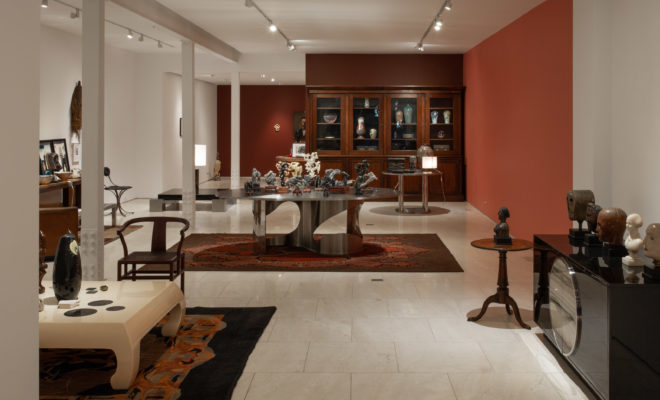 A view of the gallery. All photograph by Shade Degges, courtesy of the Artist and Demisch Danant.
A view of the gallery. All photograph by Shade Degges, courtesy of the Artist and Demisch Danant.
Exhibition
A Specific Eye: Seven Collections at Demisch Danant
The urge to collect often grows out of our childhood desire to categorize and play, making sense of experience by accumulating and sorting random objects—buttons or seashells, for instance—searching for patterns or logic to connect scattered parts of the material world. For some of us, collecting becomes a way to remember or to memorialize, for others, to contemplate or meditate. It can develop into obsession, so that the collector literally pursues objects like a captivated lover. It can also lead to the celebration of what the design gallery Demisch Danant has called “A Specific Eye,” which is also part of the title of a splendid new exhibition, running in its West Village display rooms through April 6.
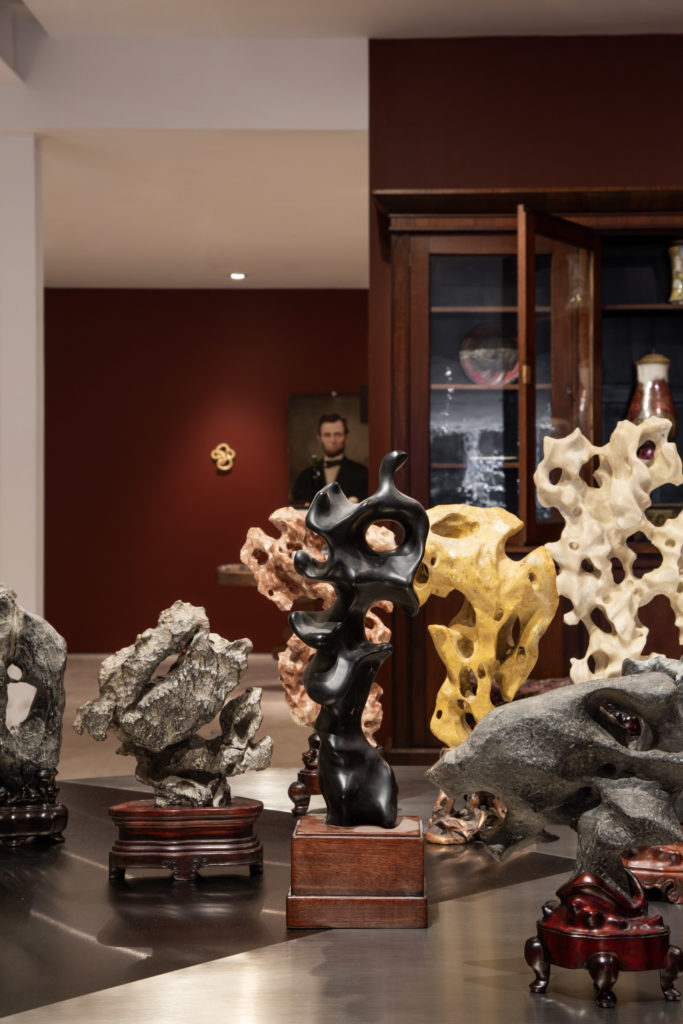
A detail shot from the collection of Ugo Rondinone, which features 17 Chinese gōngshí and
Japanese suiseki (scholar’s rocks).
The gallery has invited seven clients to lend portions of their private collections—paintings, sculptures, ceramics, and all kinds of objects—arranging them around and on pieces of modern French furniture from the late 1960s through the early 1980s, and the result is inspiring. The furniture has been selected from the gallery’s inventory of French vintage works, such as Bernard Govin’s massive Elliptique armchair (still in its original and now weathered leather upholstery with darkened patina), Michel Boyer’s sleek Osaka console with exotic wengé wood and oak, and Michel Pigneres’s ingenious and elegant stool made with latticed stainless steel. Because of the high quality of production as well as the simplicity of the handsome and balanced forms, these are pieces that represent both modern and classical ideals. They were instrumental in creating the eclectic design aesthetic that emerged in the 1970s and, likewise, they combine gracefully with the diverse collections in the gallery today. Interestingly, while there’s a familial quality that links the furniture, the collections that perch on and radiate around them create seven very distinct environments.
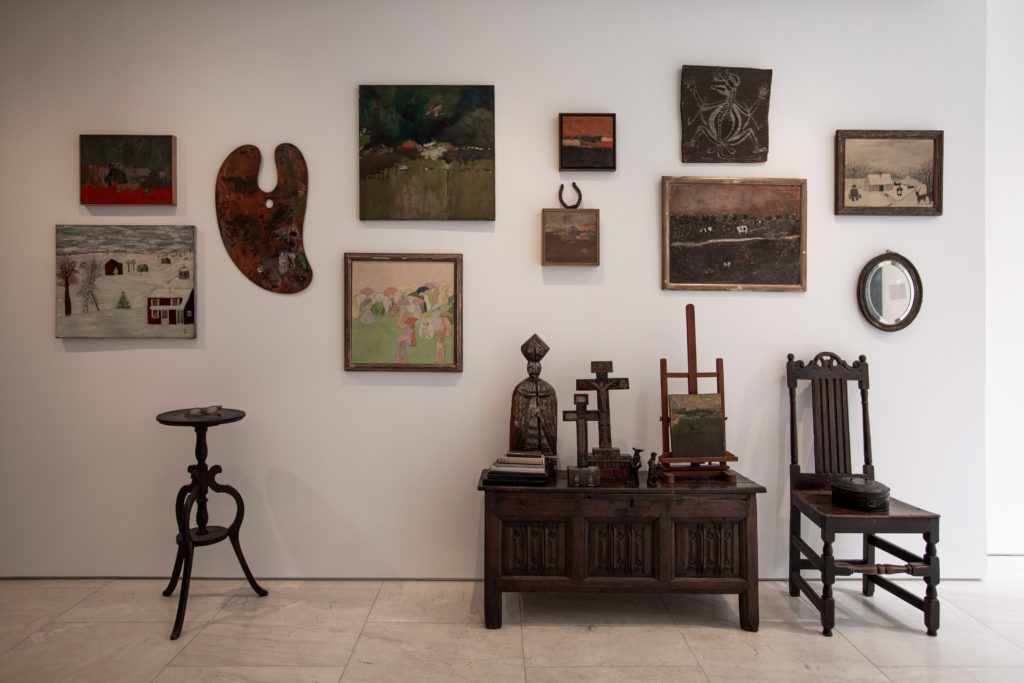
Pieces from Saul Leiter’s collection.
The art dealer Frank Maresca’s collection, which includes five busts and heads arranged on Maria Pergay’s Cabinet with Marble Disc, makes one of the loveliest displays. Set in a row and by size in descending order, left to right, each piece, in its own way and with different intensities, looks ahead and challenges us to return the gaze. The artworks range in style from Odd Fellow, a painted tin fraternal lodge skeleton lantern, to Woman with Upswept Hair, a dignified mid-nineteenth-century marble bust, and they offer a universe of human expression. Pergay’s black-lacquered credenza is a felicitous choice for the base with its large decorative circle of marble that looks like a cross-section of the moon or an eye presenting its own dreamlike fixed vision.
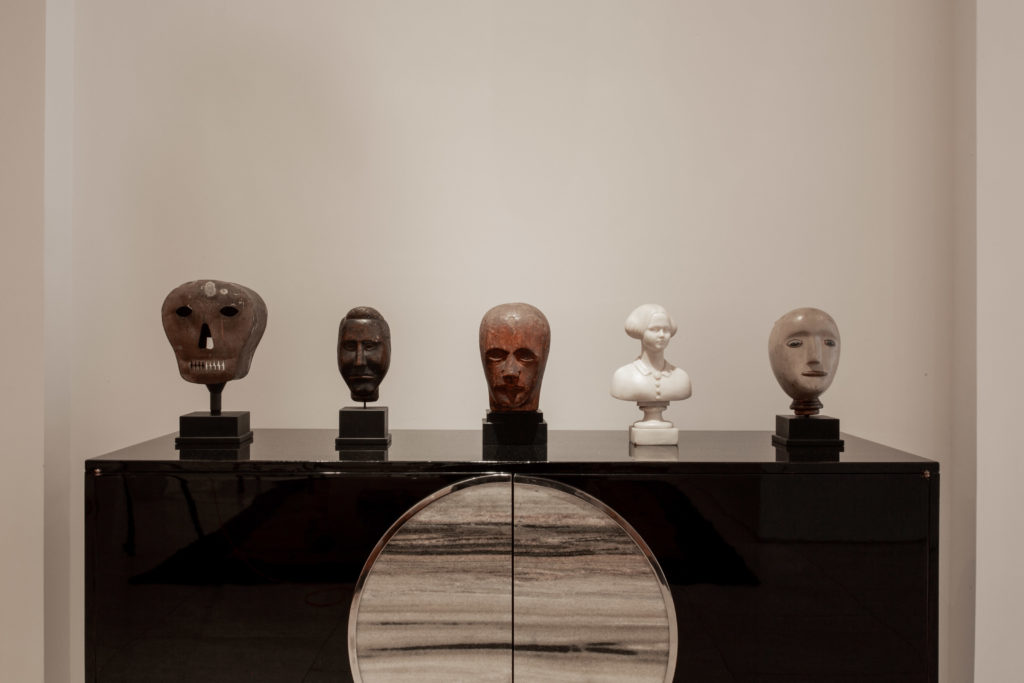
Sculptures from the collection of Frank Maresca.
Jason Jacques, who specializes in nineteenth- and twentieth-century European ceramics, has arranged a part of his collection inside a large glass-front cabinet, while a few spectacular glazed earthenware vases by Galileo Chini and gilded copper boxes by Alfred Daguet have been positioned on a dining table attributed to François Sée. The effect, even on the modern stainless steel surface, is dignified but inviting, decorative and sumptuous.
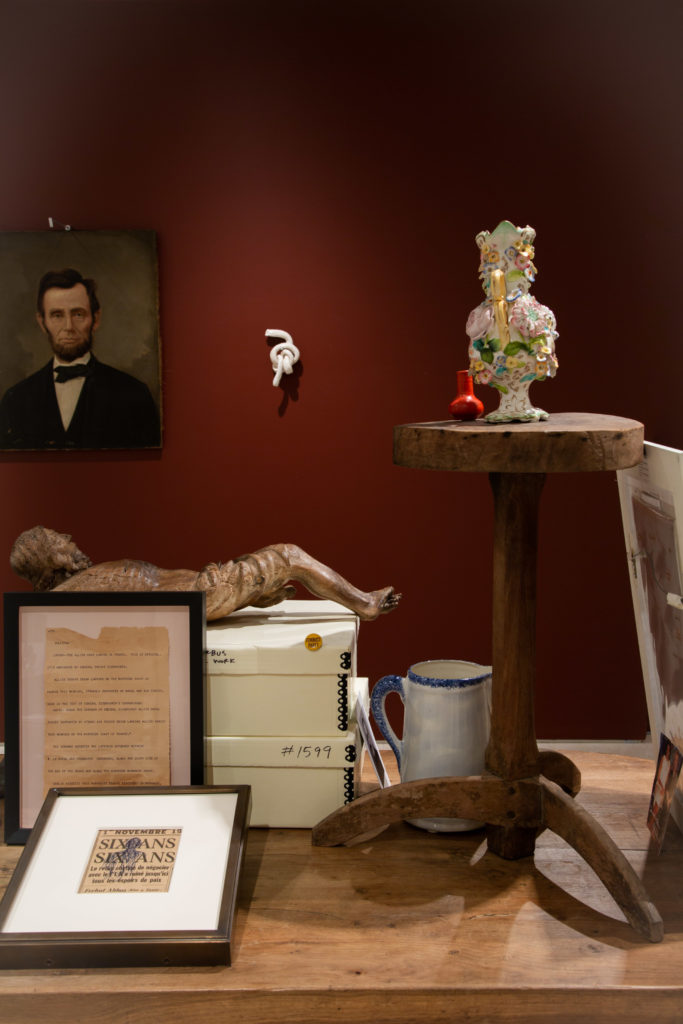
A detail shot from the collection of Bob Gober and Donald Moffett.
Likewise, François Halard establishes his own sharp and ruminative personality through the arrangement of enlarged photographic images taken from his home in Arles, his antique Islamic pottery bowls and carved African figurines, and the provocative contrast of a powerful wood and grass tribal mask hanging above a Claude Lalanne Grains de Café side chair. The lesson learned, of course, is that the “specific eye,” searching out and focusing on collected objects and placing them in particular arrangements, adds a depth of personal meaning to our experience of design.










